Team Fortress 2 Game Review
This game is considered one of the most successful and popular free-to-play games of all time, and even more so the most highly rated, with an average score of 92 on the Metacritic scores aggregator. And it has remained popular for 16 years. The secret of Team Fortress 2 success is the abundance of modes and classes, inimitable style and humor. We will tell you more about it in our review.
About the creation history and the setting
Seasoned Quake players will remember that Team Fortress was originally an amateur mod for this old-school shooter from id Software. It was developed by 3 people - Robin Volker, John Cook and Ian Coughley in 1996. Two years later their studio was purchased by Valve, and that's when Team Fortress 2: Brotherhood of Arms was also announced, a modern online action game with a realistic gridiron setting, a bit like Counter Strike, only about the battles between the soldiers with landing troops and even a commander on the battlefield.
The project turned out to be very ambitious and worked on it thoroughly, changing, adding and removing different mechanics and features. The development obviously took too long - in 2004 the game was 6 years old. And after Half-Life 2's release the project was transferred to the new Source engine, which further delayed its release.
The project turned out to be very ambitious and worked on it thoroughly, changing, adding and removing different mechanics and features. The development obviously took too long - in 2004 the game was 6 years old. And after Half-Life 2's release the project was transferred to the new Source engine, which further delayed its release.
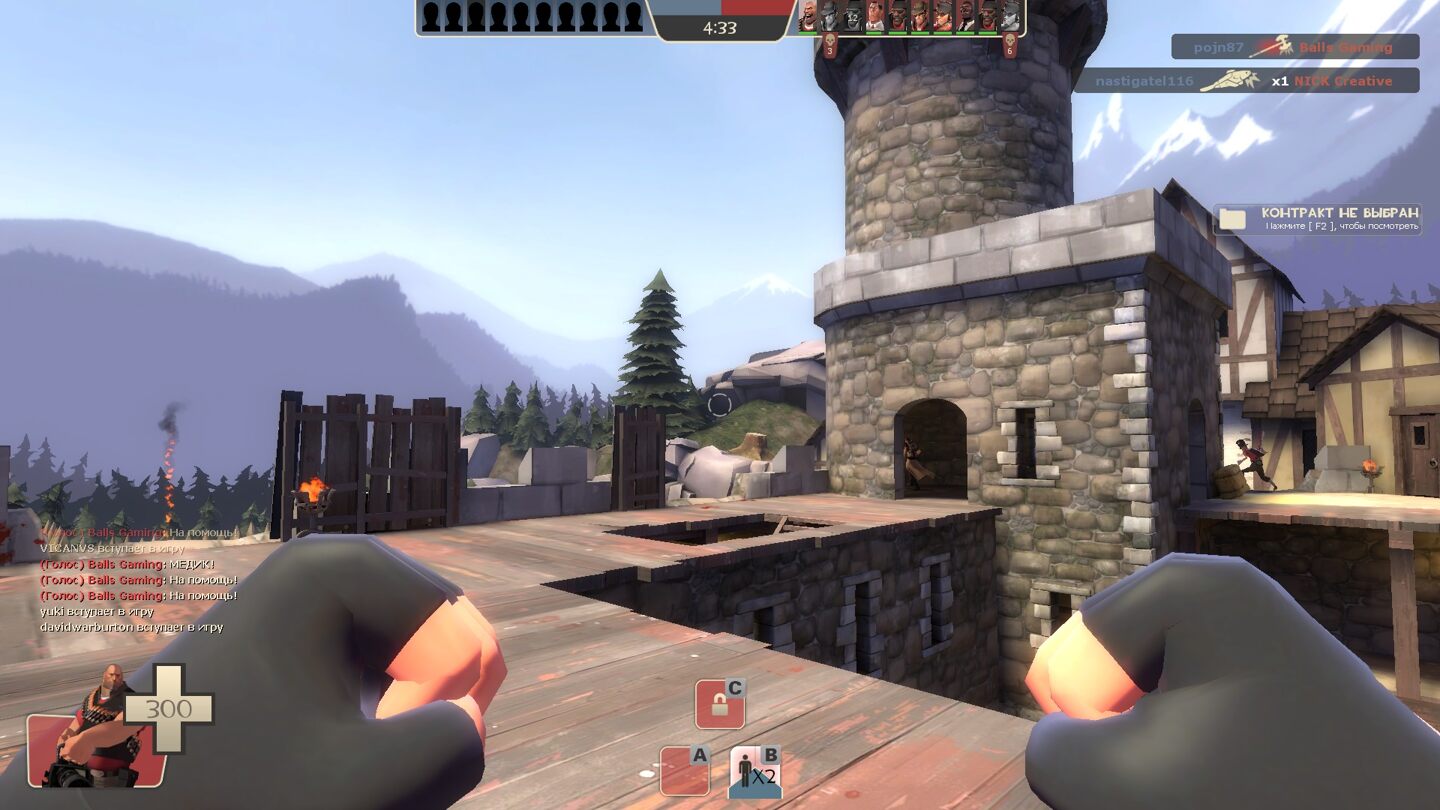
Finally, in 2007, the long-awaited release of Team Fortress 2 took place. And the game was unrecognizable - the subtitle Brotherhood of Arms disappeared, and instead of realistic setting we got a stylish comic action game with cartoon graphics in the spirit of Disney and Pixar cartoons. The game was reminiscent of "Supergirls", spy movies of the 60s and advertising posters of the beginning of the 20th century at the same time.
Valve decided to abandon the realism, to make Team Fortress 2 stand out from the crowd, and it was right. But the authors are not limited to the visuals - they invented an interesting setting about the confrontation between the two spy organizations that are masked as corporations RED and BLU. Both belong to the Mann brothers, at war with each other over their father's inheritance. All this background is revealed in the comics and official videos, which can be considered a separate work of art. The authors also added a ton of humor - it is evident in the characters, modes, and map design.
Valve decided to abandon the realism, to make Team Fortress 2 stand out from the crowd, and it was right. But the authors are not limited to the visuals - they invented an interesting setting about the confrontation between the two spy organizations that are masked as corporations RED and BLU. Both belong to the Mann brothers, at war with each other over their father's inheritance. All this background is revealed in the comics and official videos, which can be considered a separate work of art. The authors also added a ton of humor - it is evident in the characters, modes, and map design.
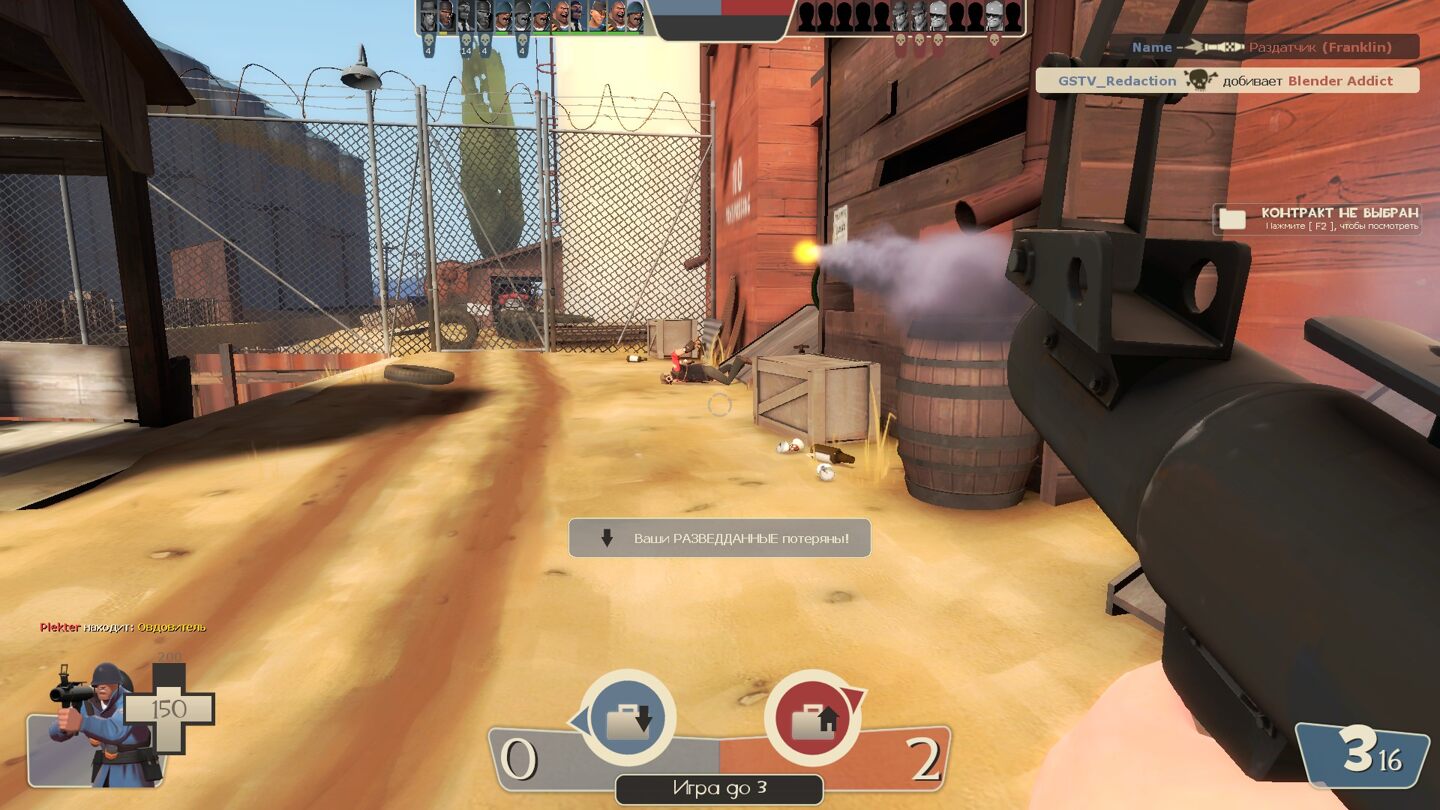
About game modes
There are a lot of modes in Team Fortress 2. And if at the start there were only 6 of them, now there are more than a dozen. The main ones are quite standard for any team-based online action. For example, there are modes where teams of "red" and "blue" fight to hold control points - either in a symmetrical version, where everyone is equal, or in a format where some attack and others defend.
There are the classic "Capture the Flag" (in this case, documents), "Arena", "Territory Control" (a variation of control point fighting, but larger and more complex), and "King of the Mountain", where one team must capture and hold a central location for a certain amount of time. Two "cargo escort" options are present - players must deliver a bomb cart, with one team pushing it through the control points and the other attacking, or the Red and Blue teams trying to escort the carts to the enemy base at the same time.
There are the classic "Capture the Flag" (in this case, documents), "Arena", "Territory Control" (a variation of control point fighting, but larger and more complex), and "King of the Mountain", where one team must capture and hold a central location for a certain amount of time. Two "cargo escort" options are present - players must deliver a bomb cart, with one team pushing it through the control points and the other attacking, or the Red and Blue teams trying to escort the carts to the enemy base at the same time.
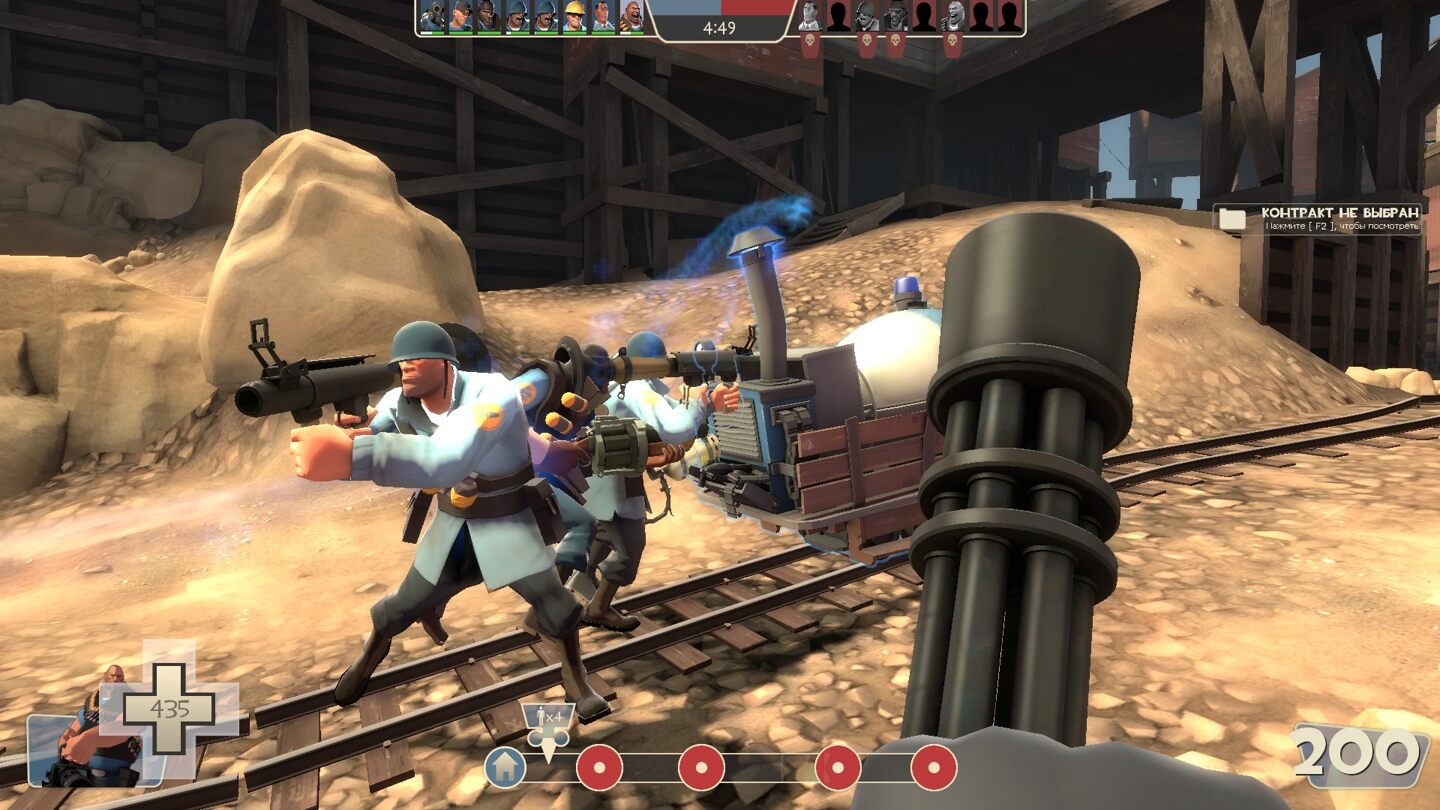
In Special Delivery mode, one team must capture and deliver a suitcase with a rare mineral to the elevator at the end of the base, while its rivals try to prevent this.
But in addition to the classics, there are more fun, unconventional variations of the game. For example, in the "Pass the Ball" mode, which the authors themselves describe as "a combination of the usual bloody, funky TF2 and funky sports like soccer, hockey and basketball," teams must grab and get the ball into the opponent's goal while fighting off opposing players attacking them. There are plenty of jumps and boosters, making the game dynamic and in some places hilarious.
And in Mann vs. Machines co-op mode, players team up as a squad of 6 and battle against waves of attacking robots to stop them from planting a bomb near the base. In between rounds, you can upgrade your weapons for the currency gained. And then there is a group of special modes that change, if not the rules, then at least the entourage. For example, in the "Middle Ages" one team defends the medieval castle, and the other attacks on it. And all, of course, do not use firearms, but edged weapons - swords, axes, bows, and so on.
But in addition to the classics, there are more fun, unconventional variations of the game. For example, in the "Pass the Ball" mode, which the authors themselves describe as "a combination of the usual bloody, funky TF2 and funky sports like soccer, hockey and basketball," teams must grab and get the ball into the opponent's goal while fighting off opposing players attacking them. There are plenty of jumps and boosters, making the game dynamic and in some places hilarious.
And in Mann vs. Machines co-op mode, players team up as a squad of 6 and battle against waves of attacking robots to stop them from planting a bomb near the base. In between rounds, you can upgrade your weapons for the currency gained. And then there is a group of special modes that change, if not the rules, then at least the entourage. For example, in the "Middle Ages" one team defends the medieval castle, and the other attacks on it. And all, of course, do not use firearms, but edged weapons - swords, axes, bows, and so on.

In general, Team Fortress 2 has many different maps, where we fight not only in a fairly familiar environment of industrial buildings and complexes, garages, farms, sawmills, castles and so on, but also in more unusual locations and situations. For example, in a research laboratory studying alien technology. Or even battles take place right on two giant trains comparable in size to mansions. And there are periodic random effects, so that everyone suddenly becomes invisible, starts jumping in height, or their torso lengthens.
By the way, many maps, as well as game items and weapons, are created by the players themselves with the help of the Steam workshop - and there may well change the rules. Such free "people's creativity" has also become one of the secrets of the game's success.
By the way, many maps, as well as game items and weapons, are created by the players themselves with the help of the Steam workshop - and there may well change the rules. Such free "people's creativity" has also become one of the secrets of the game's success.
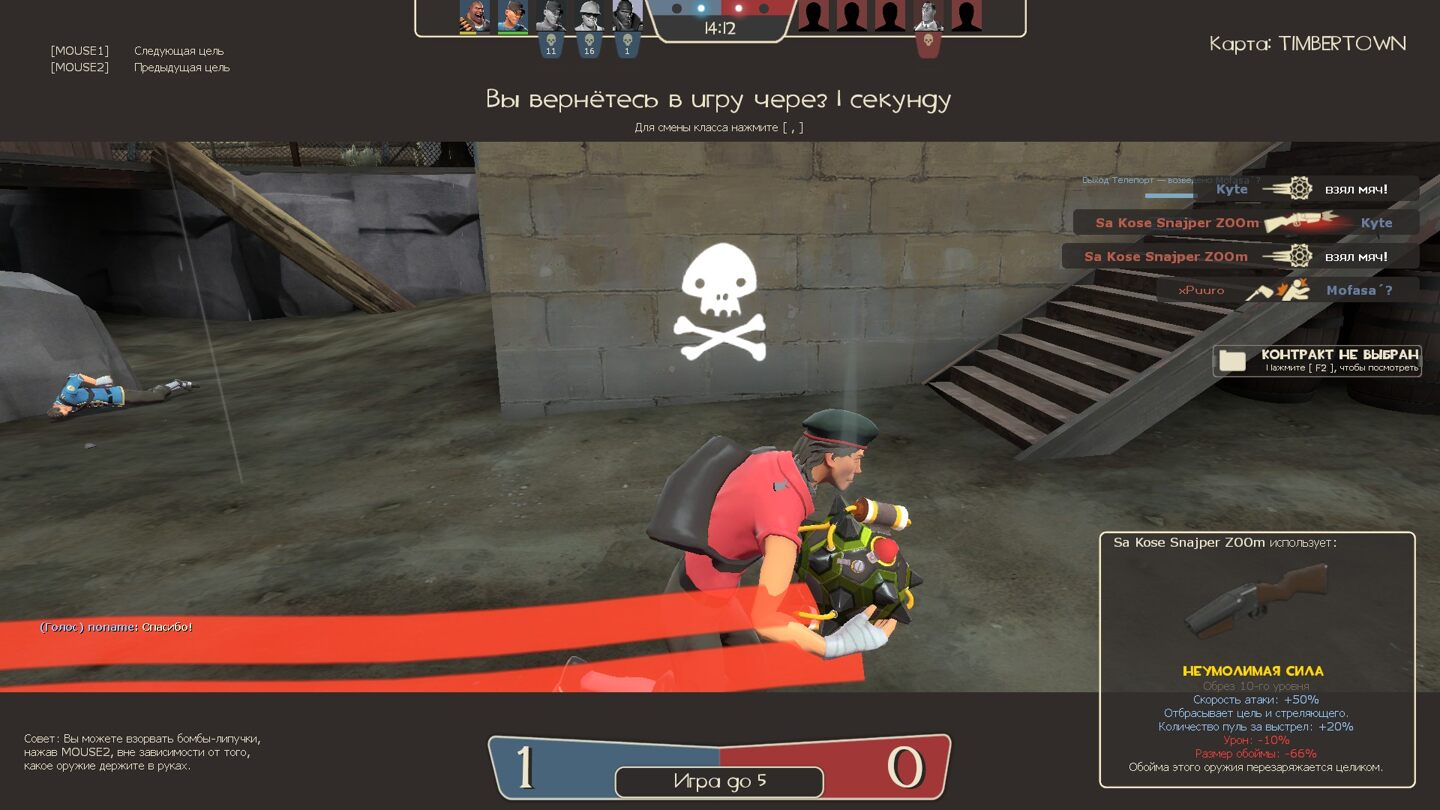
About classes and characters
With humor and creativity the developers approached the characters. In Team Fortress 2 there are 9 classes - almost more than in any other online action game. All of them are divided into three categories - attack (scout, soldier, arsonist), defense (bomber, gunner, engineer) and support (medic, sniper, spy). Each class, understandably, has its own roles on the battlefield, its own weapons, unique features, pluses and minuses.
So, a scout is the fastest in the game and is primarily useful in capturing control points, which he occupies twice as fast as others. But he has little health. The machine gunner, on the contrary, is very well protected, he has the most health, but also the slowest speed.
The bomber with his grenade launcher is ideal for destroying enemy fortifications, but he does not have any firearms that shoot straight - this limits its effectiveness in firefights. But the bomber has the largest arsenal of edged weapons. His trademark two-handed sword called "One-Eyed Highlander" first takes some health from the character, and then returns it with every enemy he kills.
So, a scout is the fastest in the game and is primarily useful in capturing control points, which he occupies twice as fast as others. But he has little health. The machine gunner, on the contrary, is very well protected, he has the most health, but also the slowest speed.
The bomber with his grenade launcher is ideal for destroying enemy fortifications, but he does not have any firearms that shoot straight - this limits its effectiveness in firefights. But the bomber has the largest arsenal of edged weapons. His trademark two-handed sword called "One-Eyed Highlander" first takes some health from the character, and then returns it with every enemy he kills.
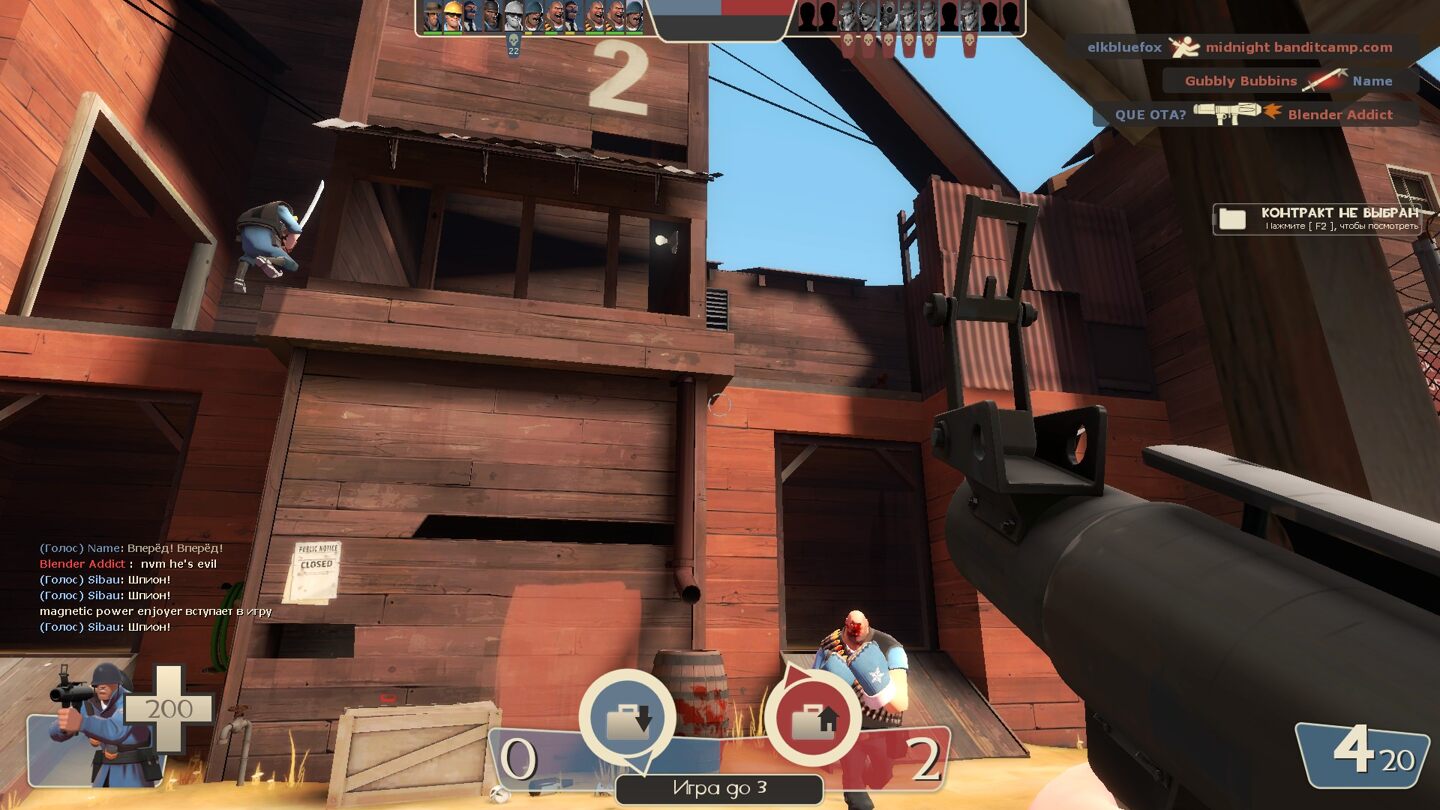
Absolutely every class has its own unique and interesting features, abilities and weapons. A soldier can do "rocket jumps" by shooting himself with a rocket launcher under his feet to jump higher. An engineer builds turrets and fixes defensive structures, a medic doesn't just heal allies - he can also accumulate an uber-charge, which gives the selected comrade a unique bonus like temporary invulnerability or a hundred percent chance of a critical attack.
A spy can become completely invisible, masquerade as any class, and kill with a single blow to the back with his bowie knife. And an arsonist with a flamethrower is perfect for detecting enemy spies like this.
A spy can become completely invisible, masquerade as any class, and kill with a single blow to the back with his bowie knife. And an arsonist with a flamethrower is perfect for detecting enemy spies like this.
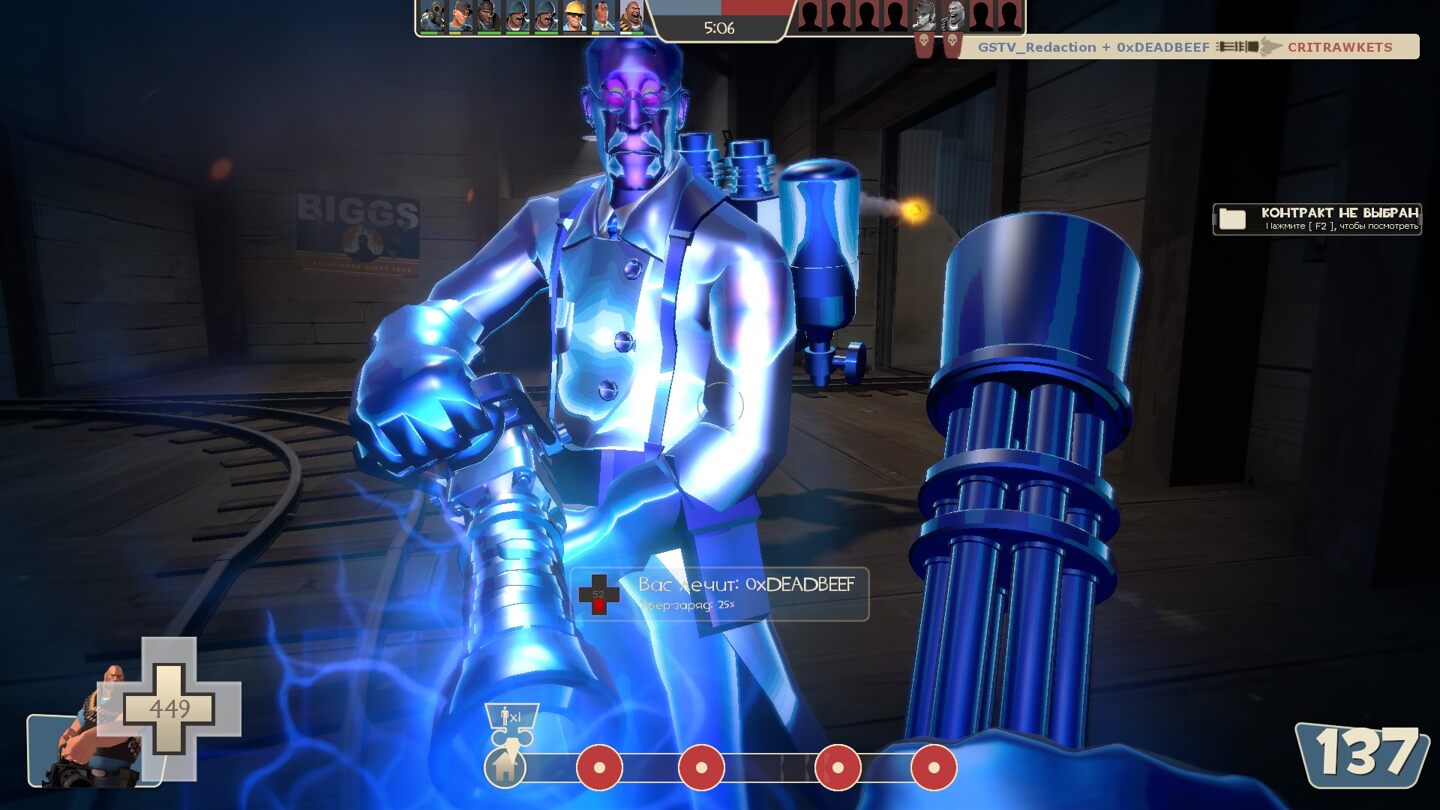
More importantly, behind each of these classes is a specific personality with its own history and biography, which is told to us in those very hilarious official videos. And directly on the battlefield it shows up, too. For example, the medic is a German from Stuttgart, deprived of his license obviously for some bad experiments. Therefore, he speaks with a German accent and loves to maim his enemies with a medical saw and an amputator. The bomber is a perpetually drunken dark-skinned Scotsman who drinks right into the fight. No wonder he hears the voice of his damn sword.
Just as unstable is the Soldier, a hypertrophied American patriot - he is known not to have been drafted into the army because of mental problems, but he went to Germany himself and killed Germans until 1949, when he learned that the war was already over. And the Arsonist is rumored to live in his own illusory world of Pyrolandia, and therefore he is feared even by his teammates.
Just as unstable is the Soldier, a hypertrophied American patriot - he is known not to have been drafted into the army because of mental problems, but he went to Germany himself and killed Germans until 1949, when he learned that the war was already over. And the Arsonist is rumored to live in his own illusory world of Pyrolandia, and therefore he is feared even by his teammates.
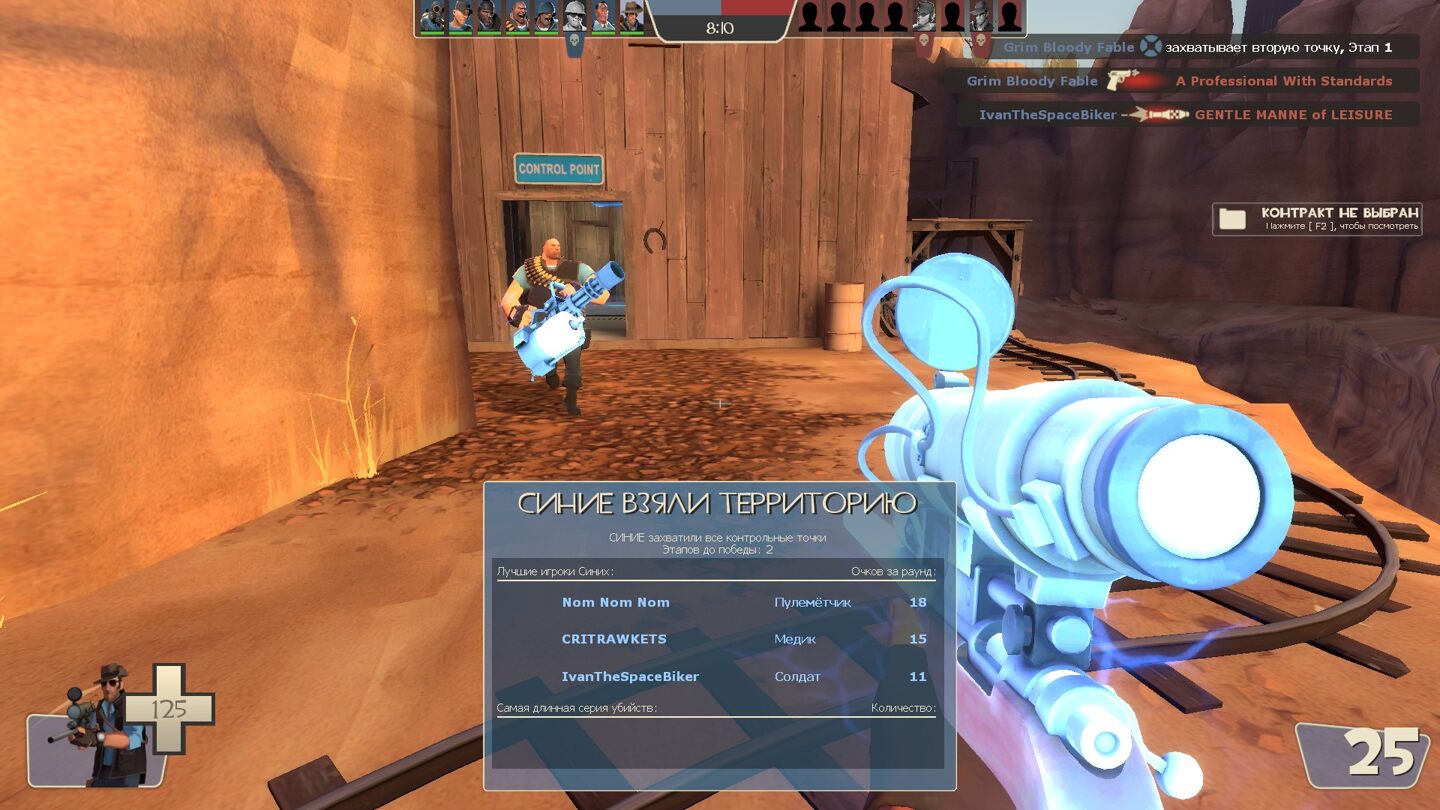
About gameplay
As you have already understood, playing Team Fortress 2 is fun. And we haven't told yet how much attention is paid to the customization of the characters' appearance. When you get different cosmetic items for free or buy them in the in-game store, you can change the appearance of your character in any way funny - make him run in the Batman mask, for example. There are a lot of options - you won't find any freaks on the maps here.
In addition, there is a system of mockery. Some are just for fun to tease enemies or allies, and other mockery is quite possible to kill - someone releases gases from the ass and brings a match, blowing up whoever is near, someone shoots straight from the finger, and so on. There are many variations.
In addition, there is a system of mockery. Some are just for fun to tease enemies or allies, and other mockery is quite possible to kill - someone releases gases from the ass and brings a match, blowing up whoever is near, someone shoots straight from the finger, and so on. There are many variations.
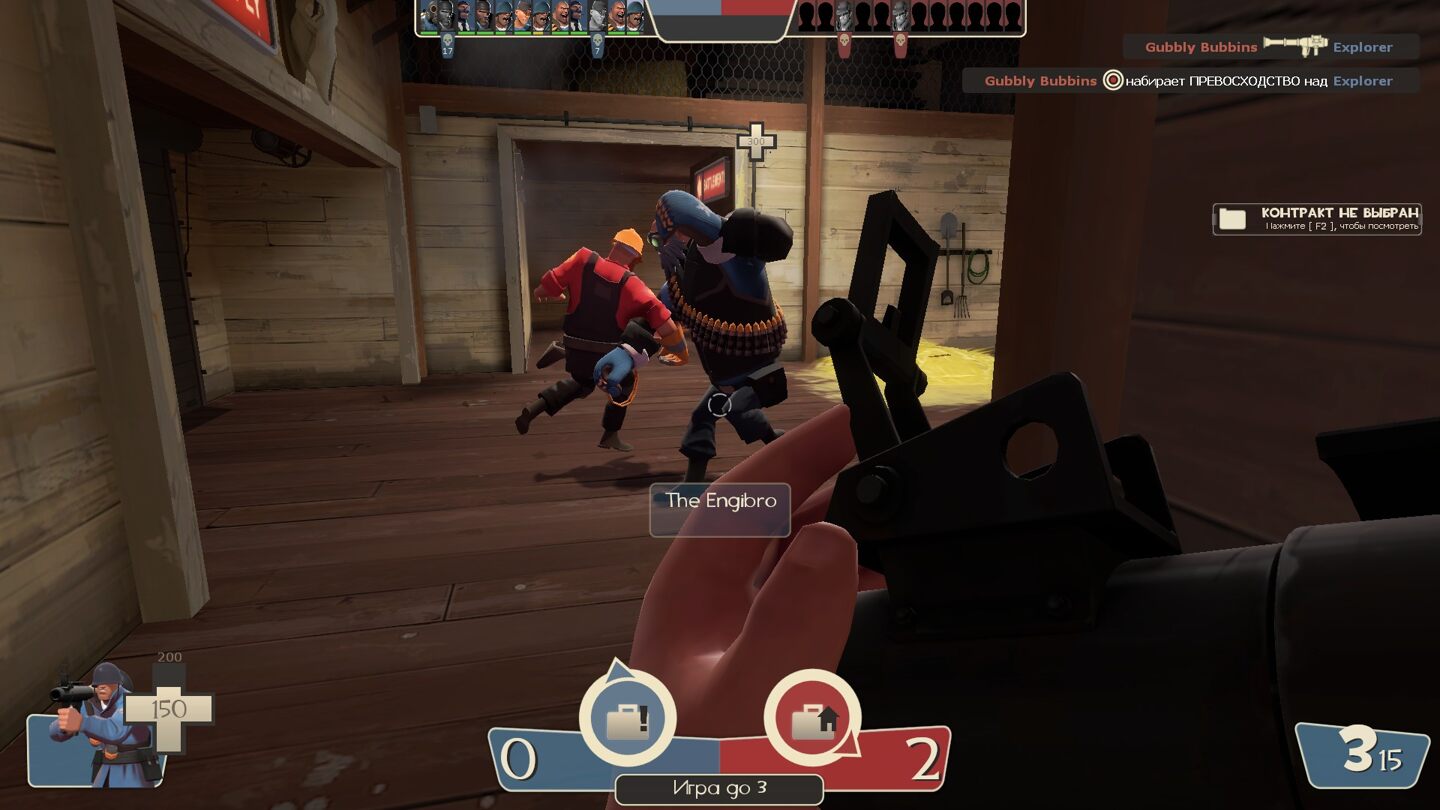
But at the same time it is quite a serious and thorough shooter, where the mechanics of shooting and evasion are perfectly worked out, where every gun feels different and where it is very important to act competently as a team, to know and use the advantages of the chosen class. There are a lot of nuances in general - for example, if you kill someone three times in a row, he becomes your villain and gets "superiority", and you turn into a victim and get a chance to revenge to get an extra point. Also, some weapons and character skills work well together and vice versa - you need to know that.
Weapons in the game in general make a huge difference. Participating in battles, winning, completing various achievements (win so many matches, make 5 headshots and stuff like that), we increase our level and unlock some new guns. Others can be bought, obtained from crates, randomly dropped or exchanged/traded with other players. There is also forging (crafting), which allows you to recycle unwanted items and make new ones - you still need blueprints for this.
Weapons in the game in general make a huge difference. Participating in battles, winning, completing various achievements (win so many matches, make 5 headshots and stuff like that), we increase our level and unlock some new guns. Others can be bought, obtained from crates, randomly dropped or exchanged/traded with other players. There is also forging (crafting), which allows you to recycle unwanted items and make new ones - you still need blueprints for this.
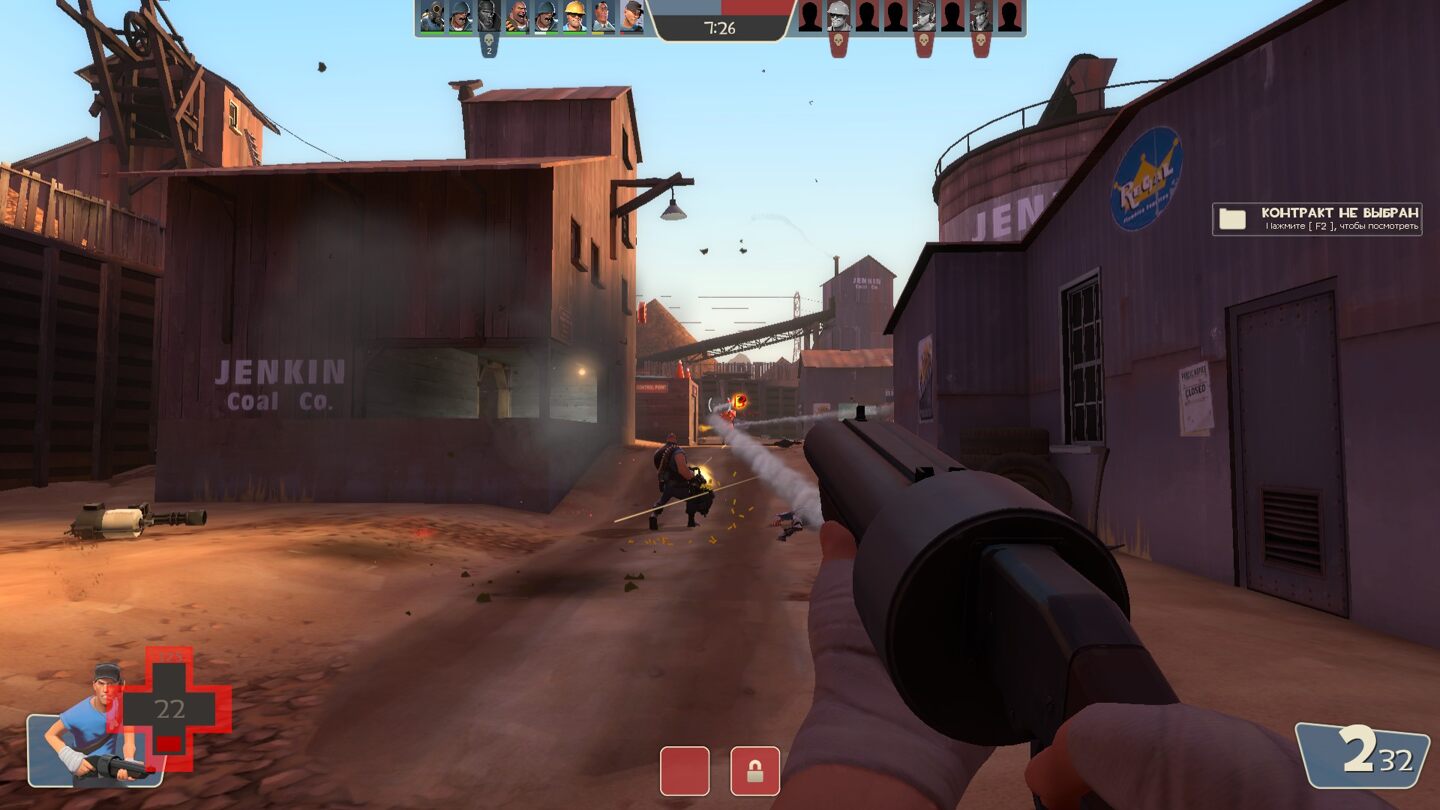
It's clear that in a conventionally free game, there are options to spend your money - for example, on keys to open crates, on tickets to access a special variant of Mann vs. Machines mode called MANNevres to get special items after completing a mission. Or for premium status, which, among other things, facilitates access to blueprints for forging.
But in Team Fortress 2 there is no rigid Pay to win donation - both free and purchased weapons have to be alternated and used in about equal measure. And donaters have no special advantage in the battles themselves.
But in Team Fortress 2 there is no rigid Pay to win donation - both free and purchased weapons have to be alternated and used in about equal measure. And donaters have no special advantage in the battles themselves.
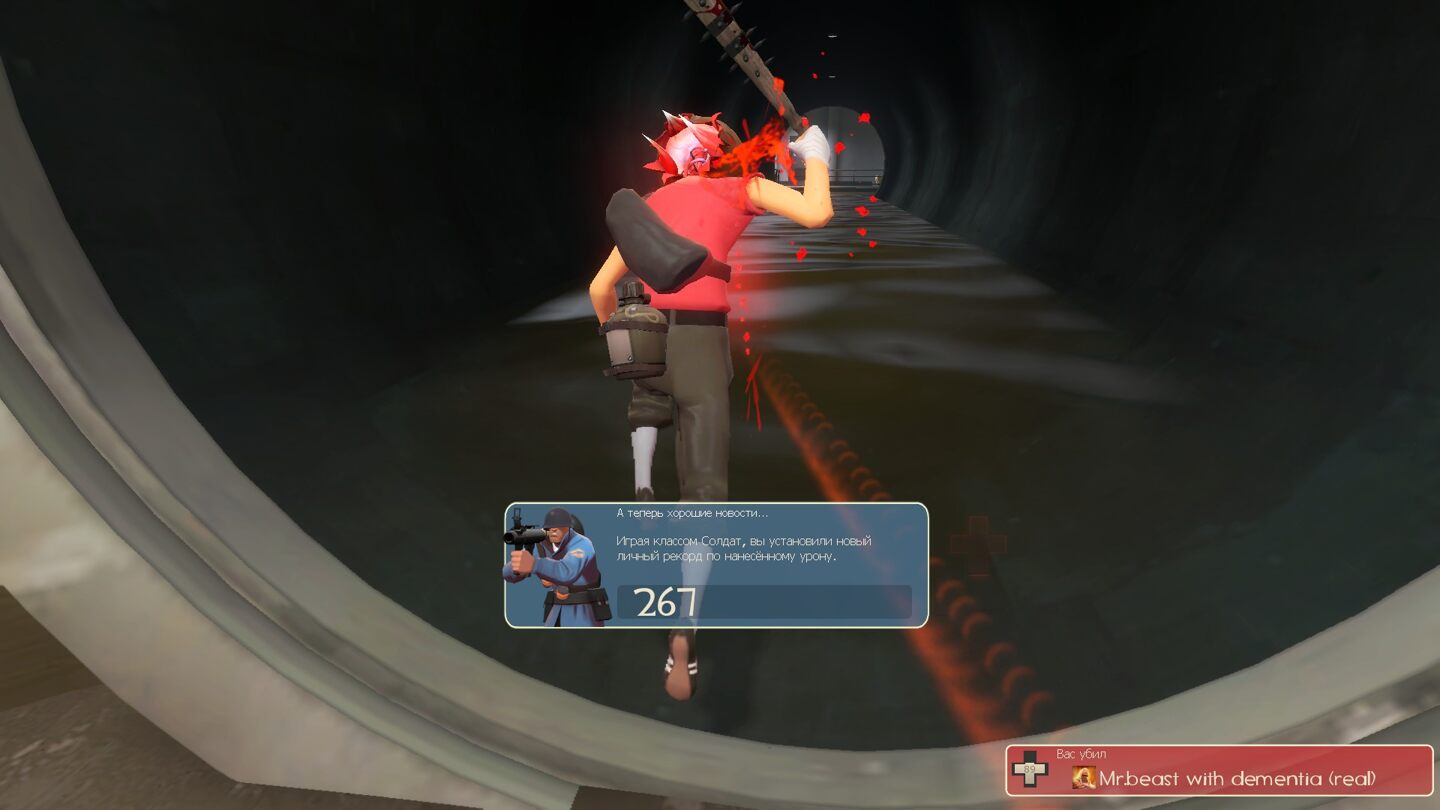
Much more often at one time players complained about the fact that the developers have not released any updates for a very long time. And during this time Team Fortress 2 was hit by a wave of bots, which were created specifically to complicate the life of the players - we are talking about lag-bots, spam-bots and aim-bots. However, some time ago Valve decided to update the game and found ways to make life of the bots more difficult. So now it's quite comfortable to play Team Fortress 2 again.
Conclusion
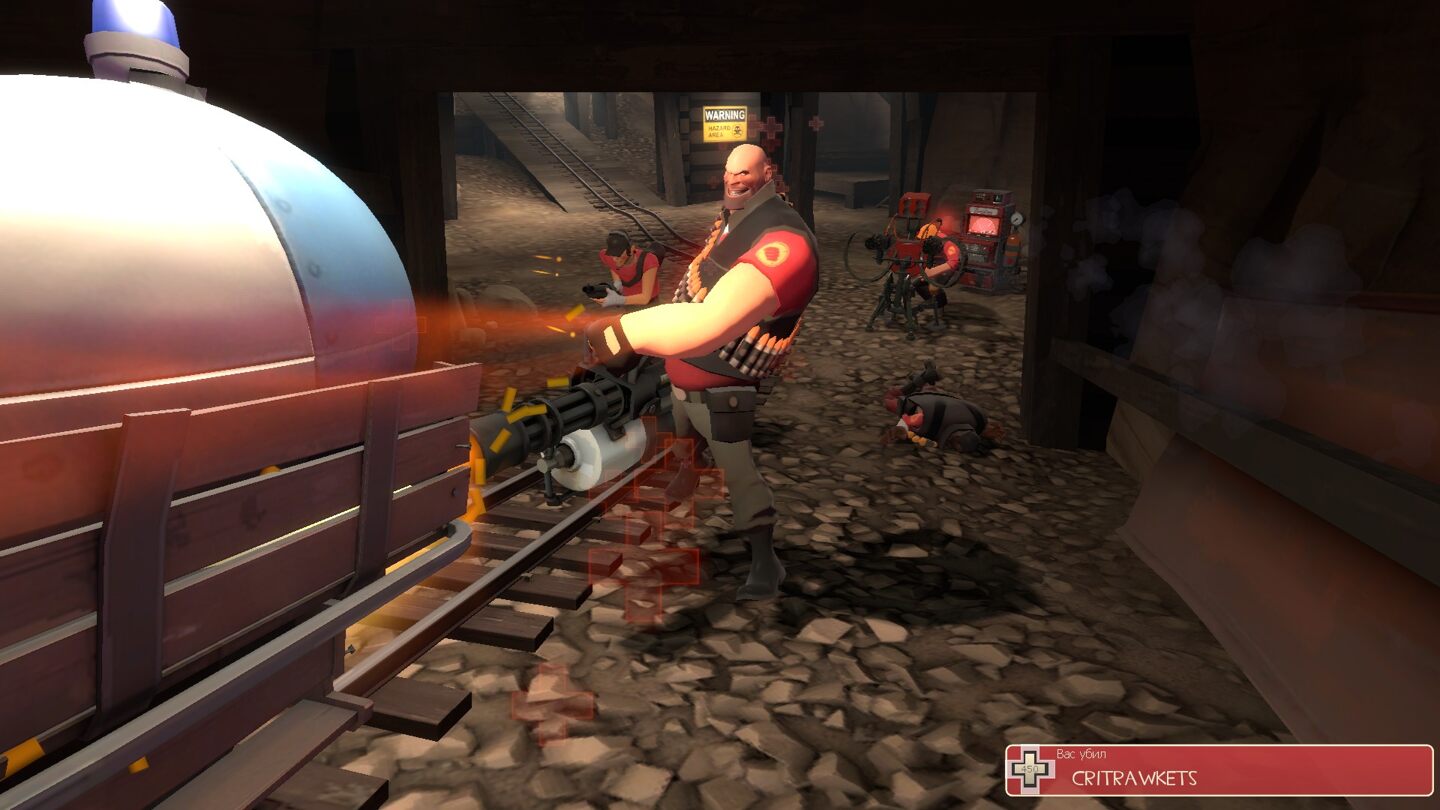
Team Fortress 2 has not become obsolete in 16 years. Even if rarely, updates are released, various eSports tournaments are still held, and the servers are always full of people willing to fight together against robots or against each other. This is a truly unique, very stylish, fun and at the same time quite thorough serious online shooter, going into which, then it is very difficult to stop.
Zarium. March 2023
Zarium. March 2023
